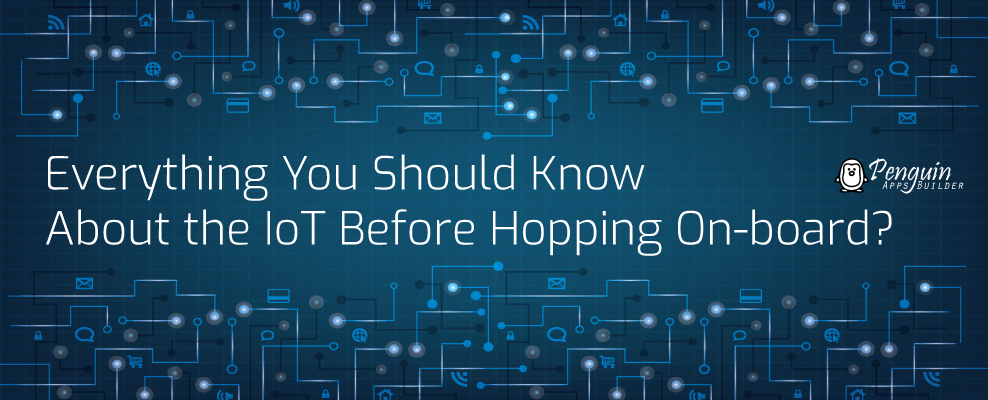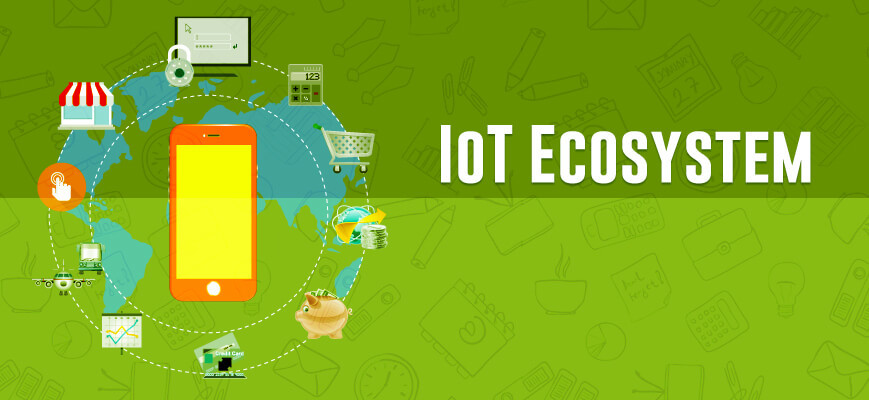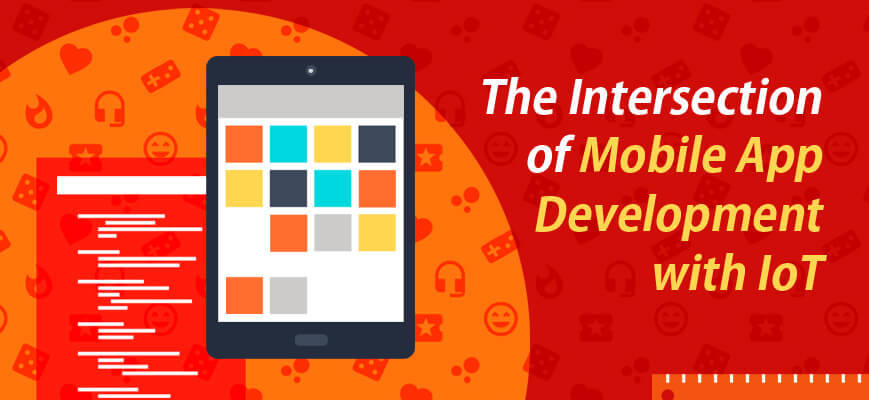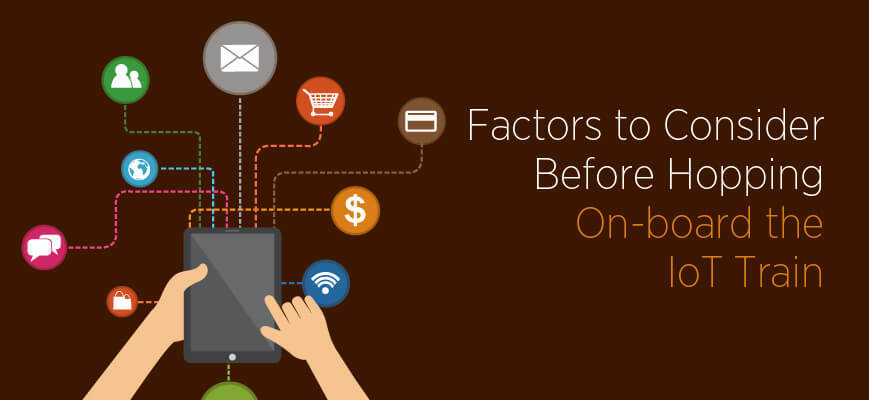
It is beyond doubt today that the Internet of Things (IoT) and mobile app development work really well together. Hence, it is important to understand how IoT is going to impact mobile app development in the future.
IoT is being rapidly adopted and is emerging as a technology that has the potential to bring about a change in almost every aspect of your life. This is indicative of the fact that there is going to be an enormous scope and plenty of opportunities for every industry vertical on the planet!
As the conversation about all things related to IoT is getting louder, it is becoming increasingly clear that the Internet of Things is here to stay and is way more than a mere trend. So, let’s begin by delving a little deeper and understand what it really is?
What is Internet of Things?
Internet of Things or IoT is a network of objects & devices with technology embedded in them, enabling these devices & objects to interact with each other in different ways. This network of connections can be implemented in any space whether it is your home, office, or any other space that you might choose and can include a multitude of devices ranging from smoke detectors, home appliances, light fixtures, or any other object or device that is either connected to the web, or to the internet. The devices also include the smart gadgets which may be operated remotely. This has the potential to bring insurmountable benefits to a huge range of industries.
One of the reasons IoT gained wild popularity is because of the ease of use and the convenience it can offer. This indicates that the demand in apps for such devices is only going to surge further.
Understanding the IoT Ecosystem

Internet of Things like we mentioned earlier is a network of objects and devices that have the ability to interact and communicate with each other in different ways. The concept is going to allow a lot more of human-machine interactions in addition to machine-machine interactions. Let us try and understand the entire ecosystem or things that come together to build the ecosystem of IoT. The 4 basic constituents of this ecosystem that ensure its functioning are listed hereunder.
1) Hardware
Most of the modern-day machines and devices have the capability of emitting & detecting frequency signals in their surrounding and have the ability to attempt to connect with them. This is made possible with a variety of sensors (temperature, motion, and pressure) embedded in them. These sensors make it possible for the devices to convert the physical parameters into signals that can be measured electrically.
2) The Gateway
As suggested by the name, the Gateway is essentially a kind of path that bridges the gap between the hardware and the interconnected web or the internet based on the signals. These Gateways are responsible for collecting data from the signals emitted by the devices and for transmitting them to the internet infrastructure.
3) The Cloud
It can be stated without a doubt that we have all fallen in love with the internet and The Cloud. It is virtually limitless and has the capacity to store billions of databases. It is this infinite database that helps process the transmitted signals before being used to perform intelligent actions deeming these objects or devices ‘smart’.
4) Mobile App
This is in context of the end user. It is this app or the software that makes it possible for us to communicate with the machinery, because their communication primarily is through binary codes. It is finally these intuitive apps that allow us to observe and operate the devices. It is these apps that have the ability to receive and push the information that is important which further allows the user to send commands to their smart device.
These are the four constituent entities that come together to formulate the Internet of Things. How it works is better understood with the help of an example. Temperature for instance is calculated when the mercury in the glass thermometer expands or contracts. It is then measured and converted electronically so that it may be read by the user through the calibrated glass.
Every day the human life is becoming more and more dependent on technology, and the role played by Internet of Things on this does not surprise anyone anymore.
Take the example of air conditioning, which is essentially a piece of hardware that you want to control. The air conditioning system in your home is connected to your local Wi-Fi, to which you have also connected your smartphone. Once you have this link established, you have the ability to control the air conditioning in your home by simply tapping on your smartphone screen.
If you are questioning the involvement of smartphones in this whole scheme of things, it would do you good to remember that the whole world is indeed going mobile. As we flit all over the town taking care of our daily tasks, we have started relying heavily on smartphones for that. It means that smartphone have virtually emerged as a necessity for just about anyone especially since it is available in abundance too. This trend has further been strengthened by the advent and rise of mobile technology & internet. A number of industries are taking advantage of IoT especially healthcare, energy, & agriculture. In the times to come IoT would only gain further prominence in our daily lives as well with the introduction of connected cars, smart cities, smart retail, and the proliferation of wearables. These areas would only see an upsurge in the next few years.
The Intersection of Mobile App Development with IoT

IoT makes things incredibly convenient, easy, & efficient. The trend of connecting all sorts of devices to the internet and controlling them through smartphones has been established quite strongly and IoT’s timing to enter the market could not have been better. In this time and age it is simplification and ease of use that rule all your business decisions.
By connecting your smartphones to the devices, you gain complete control over all the features provided by different machines and gadgets you use. When you are using a variety of devices through the internet, you are allowing the apps to send out push notifications to your phone directly, which means you have the ability to control the systems even when you are away.
As IoT takes on the world, it would bring with it an evolved movement of app development, especially IoT apps. These new apps would be a combination of a number of components including connected devices, sensors, networking, cloud, and analytics. A great number of permutations & combinations may be built using these components which will them allow you to create innovative applications designed to serve a unique purpose.
The Safety Factor
For a great number of years, industry giants have struggled in adapting to the cloud with the speed everyone expected them to, and that was simply because of the concern for security. With cloud vendors stepping in, some of these fears about security have been allayed and the organizations have been pretty quick to adapt to an evolved hybrid approach that allowed them to still take advantage of the cloud.
Quite like the cloud, Internet of Things too is notorious for its extreme level of ‘interconnectedness’, which means the security concerns being raised in this context are similar as well. Here, all your devices are connected to the internet and are controlled by one master device that is your smartphone; this means the chances of getting hacked is quite real too! This hacking may originate anywhere, government agencies, malicious corporations, or unethical hackers putting all kinds of sensitive user data (or any other data that is private for you) at a high risk.
The battle between enlightened citizens and different governments have been going on for quite some time now where the concern for privacy has been looming large when it comes to the government aligned bodies procuring information about citizens through indirect means and measures. For now, even though things are a little ambiguous, consumers seem to be onboard the concept of interconnectedness as their curiosity about how their lives are going to be enhanced is getting the better of them.
When it comes to enterprises though, there is still quite a lot of skepticism in the air, and it is not entirely baseless. However, the skepticism is laced slightly with a will to explore the potential of IoT in simplifying their lives and day to day operations.
There are a good number of organizations who have opted to run a host of devices online, while fortifying them with an additional layer of security, to maximize efficiency and response time. While security is one of the most crucial points of discussion in enterprise app development, it would do well to notice that the defense barriers can actually be improved when you enforce physical devices to become the first point of entry.
Factors to Consider Before Hopping On-board the IoT Train

Whether you are an enterprise or an individual consumer, you stand to gain big from IoT. It is possible for the companies to connect all of their electronic gadgets and devices within their business environment and hence simplify the work processes exponentially for all their employees, thus boosting their productivity.
However, before you jump on the IoT train, it would do well to keep certain factors in mind. Listed hereunder are some of the most important factors that you must consider.
#1 Licensing Agreements
Every Original Equipment Manufacturer or OEM requires the app developers and manufacturers to adhere to certain license agreement terms. The enterprises who are looking forward to get onboard IoT must make sure that not only are they fully aware of these terms, but are also adhering to them.
#2 Connectivity
The hero in the concept of IoT is the connectivity. Do you have a clear plan about how you are going to connect the devices over the internet? Would you be making use of Wi-Fi? Would you be choosing Bluetooth? Or do you think you are going to go with the traditional mobile network? Apart from all this, it is important that you pay attention to the different types of mobile networks and the rangeof mobile devices that you plan to support. After you have accomplished this, you would then need to sit down and work out a strategy to assign permissions. It is only natural that C-level executives and the top management be afforded special privileges which would not be available to others.
#3 Challenges & Capabilities Regarding Hardware
It is important that you take into account the compatibility of all the hardware at your enterprise that you want to connect. The industry giants have the scope and pockets to add new hardware capabilities, but bear in mind that not only is the process quite pricey, but quite complicated as well. Hence, this might not really be an option for the smaller businesses or even the SMBs.
#4 Programming Frameworks
There usually are a bunch of programming protocols that are put in place by the app developers as they get into mobile app development for the devices that they wish to connect with each other. Communication with external hardware connected to an iOS-based device is enabled by the External Accessory framework through either the Apple Lightning or 30-pin connector, or through Bluetooth (wirelessly). This framework plays pivotal role in helping the developers to determine the different types of apps the IoT devices can access through its connected mobile devices.
#5 Readymade or Custom-made
This brings us face to face with the ever puzzling conundrum of making a choice between a readymade IoT platform or opting to build a custom IoT app from scratch. Unfortunately there are enough points to argue from both the sides. Building a custom app from scratch needs a whole lot of investment in terms of time, efforts, and resources including money whereas opting for the readymade platforms would help you cut down on all that! These platforms have on offer some great built-in functionalities to help you create amazing apps, integrate app analytics, automate data storage & archiving, real-time messaging, and many other lucrative elements.
Unless you were living under the rock for the past few years, you know the kind of revolution smartphones have brought in with them, and now we are witnessing the big evolution being brought in by IoT. Now simply consider the power that this combination of smartphones and smart devices & gadgets can bring in by implementing this concept of interconnectedness. Hence, it is definitely high time you paid IoT a thought and evaluate whether it is a fit for your enterprise, irrespective of its size.